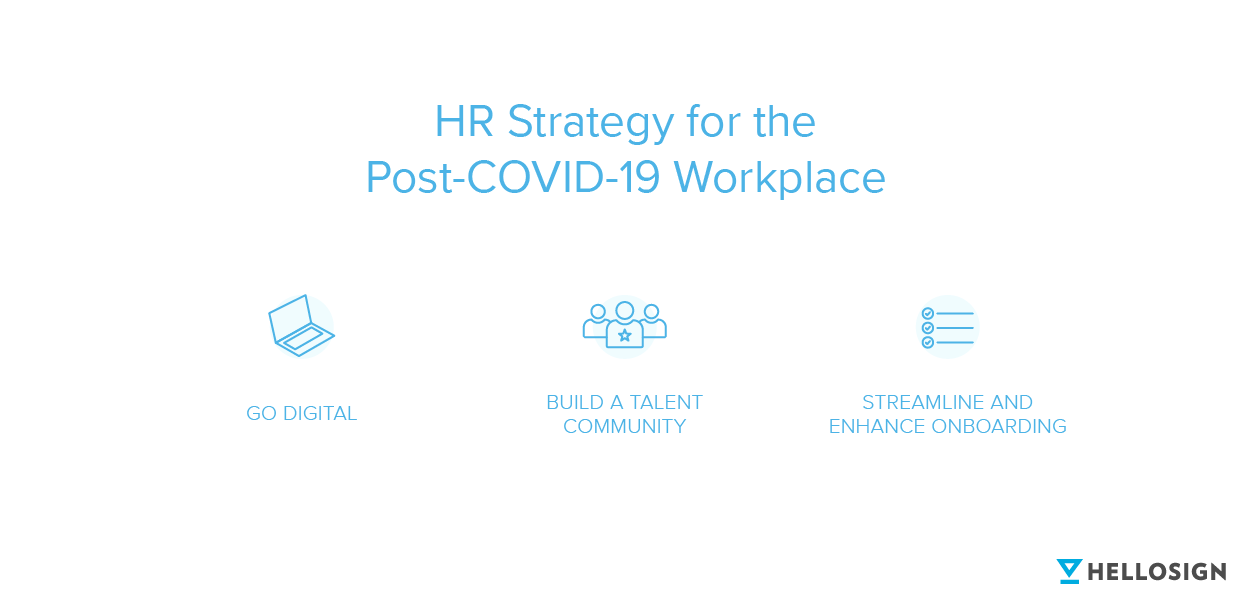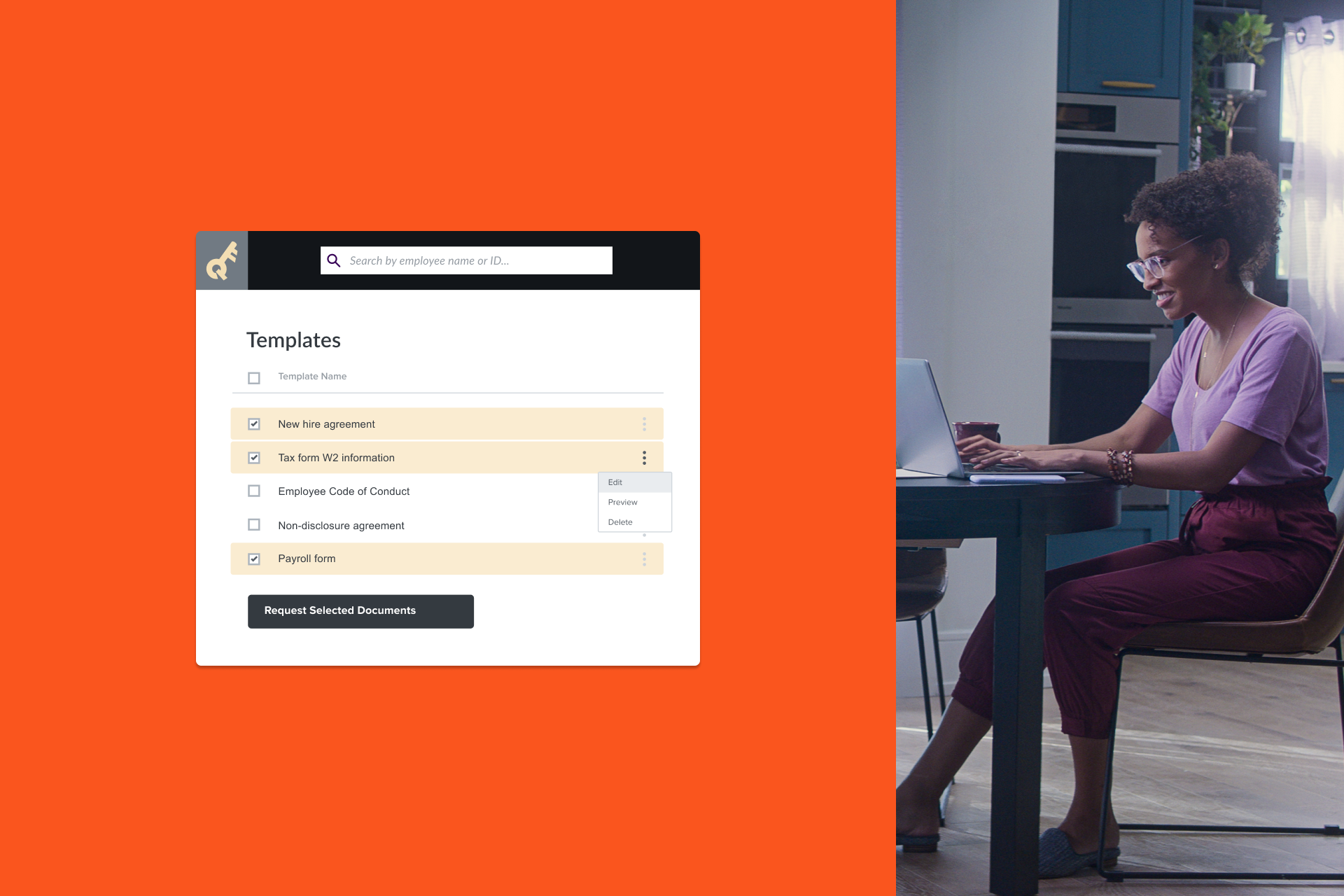Upon successfully vetting, interviewing, and offering a candidate a job; it’s customary (in the U.S., anyway) to seal the deal with a handshake.
But with the impact of the COVID-19 pandemic, such traditions are quickly becoming a thing of the past. These and plenty of other customary procedures are causing HR managers to stop and think right about now.
Today, we’re going to deconstruct the HR strategy in light of current work conditions and provide a new roadmap for HR leaders who need to attract, hire, and retain top talent by embracing technology that will propel them into the future of remote work.
The new normal of work
First things first, let’s take a look at some of the effects the COVID-19 pandemic is actually having on HR and recruitment. After we identify and detail some of the issues, we’ll devote the next section to providing solutions.
Record unemployment and applications
Revenue is the lifeblood of business. Without it, nothing works. So as businesses have watched their revenues drop to a fraction of what they were pre-pandemic, many are left with little choice but to downsize. The United States unemployment rate reached 14.7% in April 2020 — the highest numbers (yet) recorded since 1939.
While it sounds crass to complain about having too much work to do as others are desperately seeking employment, the reality is that HR managers are overwhelmed as waves of applications exceed the capacity of their systems.
No more in-person job interviews
It’s become extremely common over the last 20 years to begin preliminary interviews via phone call or videoconference, but in most cases, those have been followed with an in-person meeting.
For almost all people being hired during the COVID-19 pandemic, that has not been the case. Applicants are being screened, interviewed, and hired remotely.
Remote onboarding of new employees
And it isn’t just the interview process that’s going 100% remote — the actual hiring and onboarding process is being done online, also.
While some companies have built out robust online onboarding platforms (more on that in the next section), those that haven’t have found themselves scrambling to get the details in order — from employee training to contract execution, payroll, and more.
According to HBR, up to 20% of staff turnover happens within the first 45 days of employment, which exemplifies just how important it is to have a stellar onboarding experience for new hires.
Gainfully employed people are harder than ever to recruit
Ask any recruiter or HR manager — it’s not always easy to get top talent to leave their post and come work for you. Roughly 30% of senior leaders say that finding top talent is their greatest challenge.
Salary will always be a significant factor in the decision to leave one company for a new start, but it’s far from the only consideration the modern worker has. Increasingly, potential employees are looking for even more in a company. They’re looking for an organization with a clear purpose that is aligned with their personal values, flexible or asynchronous work models, and a culture that fits their way of life. If your HR department was having trouble winning people over in person, doing it virtually just became that much more difficult.
Now that we’ve identified some HR issues uncovered by the COVID-19 pandemic and its effect on working, let’s take a look at how to revise your strategies to find a solution.
HR Strategies for a Post-COVID-19 World

Go digital
OK, we get it — this one is painfully obvious. Or is it?
If you’re simply turning an analog process into a digital one — such as taking paper documents and turning them into fillable PDFs — what you’re doing is called “digitization.” There are some benefits there, but simply reducing paper waste and making form completion a bit quicker is only scratching the surface of what’s possible.
On the other hand, if you are able to take your new digital assets and use them to completely transform your processes, you’re participating in what’s known as “digitalization.”
Digitalization is the use of digital technologies to change a business model and provide new revenue and value-producing opportunities. In other words, it is the process of moving to a digital business.
As an example, let’s say that there is a specific form that your applicant needs to fill out before an introductory interview can be scheduled. What if that form (completed and signed digitally, of course!) was tied to a scheduling app so that its completion triggered a call to be automatically scheduled. In this example, you’ve cut several emails out of the equation and eliminated the stress of manually scheduling candidate calls.
By the way, this isn’t a futuristic scenario by any stretch — thousands of customers are using the HelloSign API in similar ways to what’s being described above. If you’re looking to eliminate manual tasks and provide a seamless HR experience for your candidates, have your tech team check out the HelloSign API.
Consider building a talent community
Let’s say you meet a really interesting candidate — smart, talented, and seems to be a good culture fit. But, they’re not quite the right fit for the current position.
How do you stay in touch with that person to reconnect when it’s a better fit for both of you?
And more importantly, how do you provide some value to that person so they can accept your rejection and continue to hold your organization in high regard?
One strategy that more and more HR departments are turning to is to build a talent community.
A talent community is defined as “... a cohort of people who would be exceptional candidates for your company, but present circumstances prevent them from joining your team.”
It’s a long-term approach, but if executed with care, this can greatly supplement (or replace) your traditional recruitment strategy. Building a talent community is not for the faint of heart, however — the trickiest part is figuring out how to organize it, how to keep members engaged, and how to provide value. How you set up your talent community is ultimately up to you, but here are a few quick tips you can try:
Create opportunities for members to build their skills and gain real-world experience
Mobilize members using a platform like Slack for collaboration opportunities
Create a separate, jobs-focused newsletter for members
Streamline and enhance onboarding with online experiences
If you’ve onboarded a new hire during the COVID-19 pandemic, you have been forced to do it virtually.
What was the new employee’s experience like? Hopefully it wasn’t too bad, since as we mentioned earlier — a stellar onboarding experience is absolutely critical to employee retention.
Online orientation for new hires is the way to go in the new world of remote work. There’s always going to be a bit of awkwardness for anybody on their first day of work, but by providing them tools to learn about the company, the products or services, and the expectations; you’ve given new hires some great material for ice-breakers that will allow them to jump in and be comfortable from day one.
From an HR perspective, online onboarding gives you tools to track new employee progress and proactively reach out if they’ve got stuck in one of the processes. And if you sync up their onboarding and your HR paperwork with some nifty automation, you might be able to save yourself boatloads of time on back-and-forth emails and phone calls full of conversations that you’ve already had dozens of times.
Ready to ditch the overflowing binders and get yourself a slick online talent onboarding system that will empower recruitment and retention no matter what the world throws your way? HelloSign is the premiere eSignature API for HR. To find out how you can leverage HelloSign to eliminate friction and complete HR processes faster, check out our solutions page for human resources.
